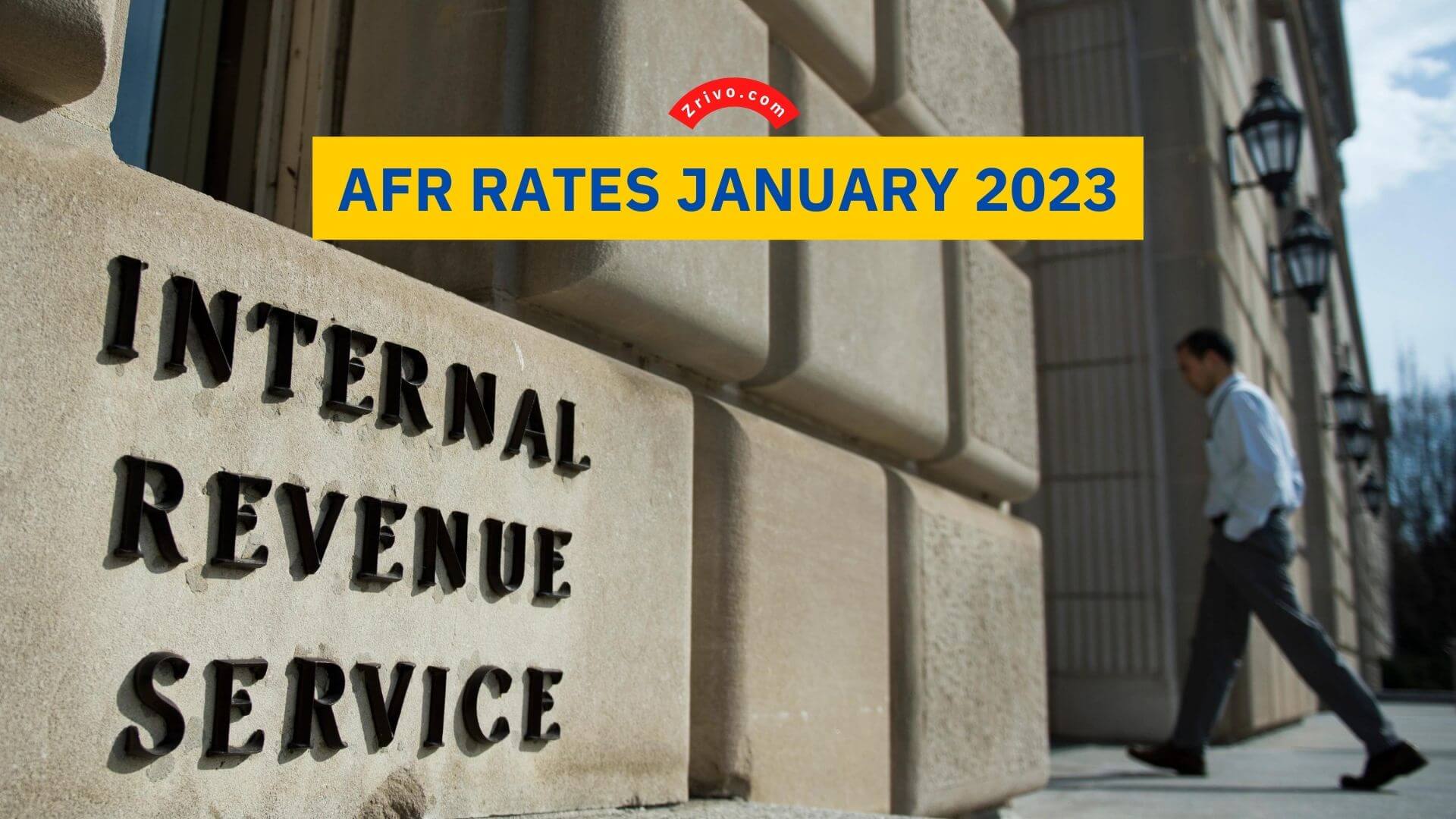
In finance, The Applicable Federal Rate (AFR) is a term that is applied to the interest rate on an individual loan. Different AFR rates will apply for different types of loans. Longer-term loans are generally higher in terms of interest. There are three different types of AFR rates:
- Short-term AFR is the interest rate that will be applied on an individual loan that’s less than three years old. It is typically 1%.
- Mid-term AFR is the interest rate that’s applicable to debt instruments with maturities of four to nine years. There are monthly and annual compounding periods. Monthly is the most common.
- Long-term AFR is the rate applicable on debt instruments with more than nine years of maturity. These include government bonds with maturities over nine years.
What Is The Current AFR Rate?
As we said, The IRS releases a monthly document detailing the applicable federal rates for each month. In addition to the long-term federal rate, it also publishes short-term and mid-term AFRs. Each category has its own rule, and there are some differences between the types of loans. Here are the numbers for the AFR Rate of January 2023:
Short Term AFR Rates
| Month | Year | Annual | Semiannual | Quarterly | Monthly |
| January | 2023 | 4.50% | 4.45% | 4.43% | 4.41% |
Mid Term AFR Rates
| Month | Year | Annual | Semiannual | Quarterly | Monthly |
| January | 2023 | 3.85% | 3.81% | 3.79% | 3.78% |
Long Term AFR Rates
| Month | Year | Annual | Semiannual | Quarterly | Monthly |
| January | 2023 | 3.84% | 3.80% | 3.78% | 3.77% |
How to Use AFR Rates?
When it comes to getting a family loan, the IRS requires that you use an applicable federal rate (AFR). This is the minimum interest rate required for any loan made between family members or friends.
Loans that are below the AFR can result in tax implications. Moreover, lending money to relatives can be considered a taxable gift by the IRS. If a borrower does not pay the loan, he or she would have to pay income taxes on the interest.
Generally, the lower the rate, the better. But in some cases, a lender may charge above the rate. Fortunately, the AFR is low, so most loans that are given to family members are below the rate.
You should consult a tax professional if you are unsure whether you are making a below-market loan. Because the rates change so often, it is difficult to know how the tax results will change.
What are the 110% and %130 AFR Rates Used for?
When you make a sale-leaseback transaction, you must have an interest rate at least 110% of the federal rate. This is because the Internal Revenue Service has ruled that it is a taxable event. It is, therefore, important to keep track of the rate used in your transaction and how it is applied.
There are many different reasons that a lender or loan provider would want to use the 130% AFR rates. These reasons range from a slick marketing campaign to a simple desire to attract investors or customers. However, it can also be a tax liability. The IRS has a set of tax regulations for lenders to follow, and some of them are surprisingly straightforward. For instance, there are a few different categories of loans, including short-term and long-term, and even open-ended lines of credit. This makes it all the more important to know the different types of loans and how the government treats them.
One of the most useful and obvious rules of thumb is to use an AFR rate that matches or beats the market rates. For example, if you borrow money at an interest rate of 130%, the actual rates will be much lower. As a result, you can save money while gaining a sense of security.